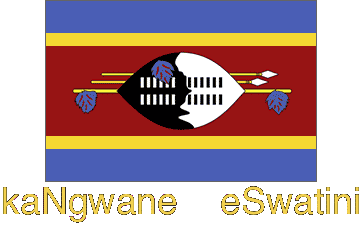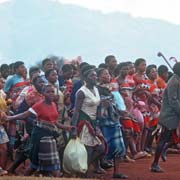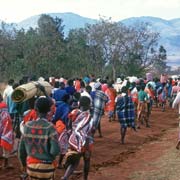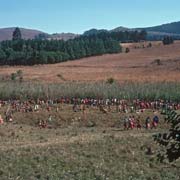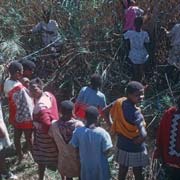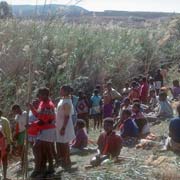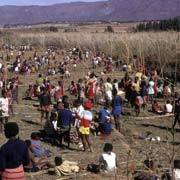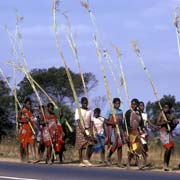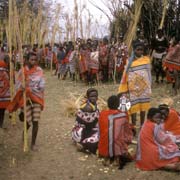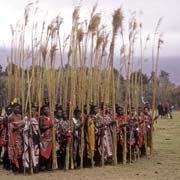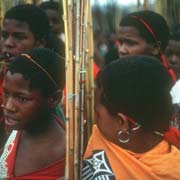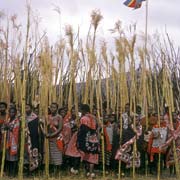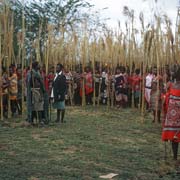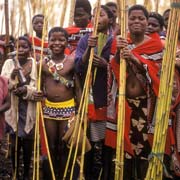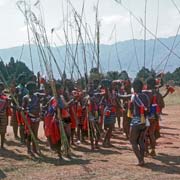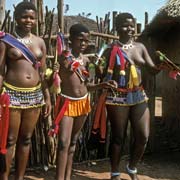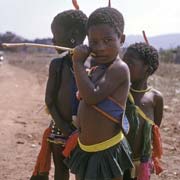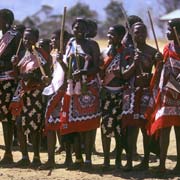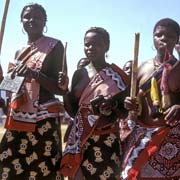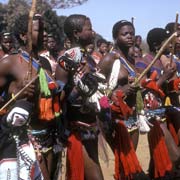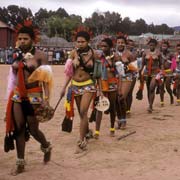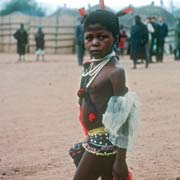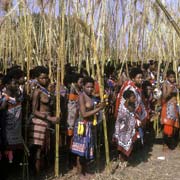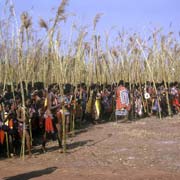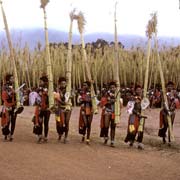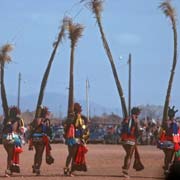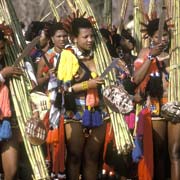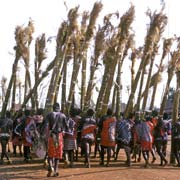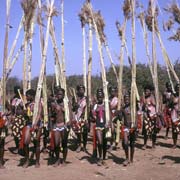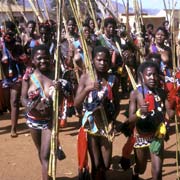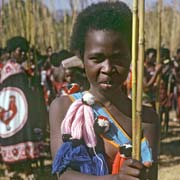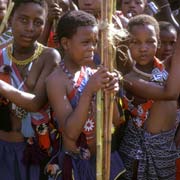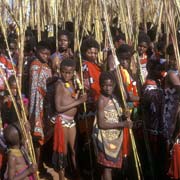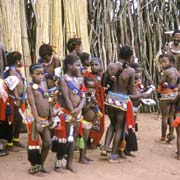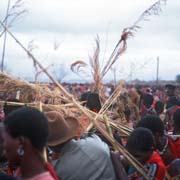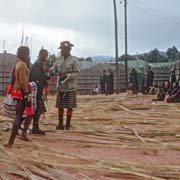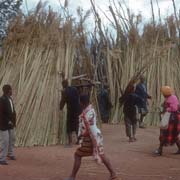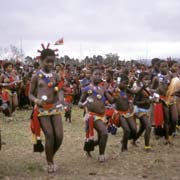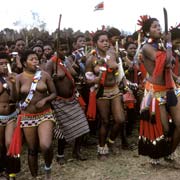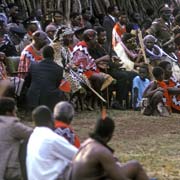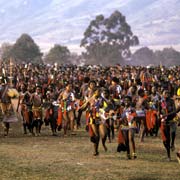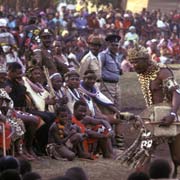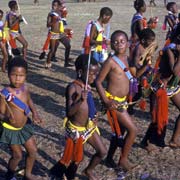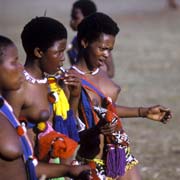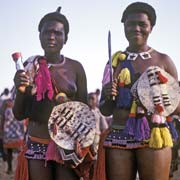Photos of the uMhlanga or Reed Dance, Swaziland
The uMhlanga or Reed Dance
Every year in late August or early September Swazi girls from all over the country set out on foot from Lobamba to gather bundles of reed in a place like Mdutshane, south of Lobamba near Malkerns; they then walk back, singing and dancing as they go, to the residence of the "Ndlovukati", the Queen Mother, in Lobamba. They are young, unmarried girls, dressed in short "indlamu" beaded skirts, often carrying torches, indicating that they had to cut those reeds at night, and the long knives they used.
you may then send it as a postcard if you wish.
The ceremony is in a way a service to the "Ndlovukati" or Queen Mother and the reeds will be used to repair the windbreaks around the traditional huts in her compound. It may also be considered a way preparing young girls for married life, as they have to cooperate among themselves: traditionally the Swazis are polygamous. On the main day the girls prepare themselves with their traditional finery, the short "indlamu" skirts, "emagcebesha" necklaces and colourful "umgaco" sashes worn across the body. The girls then come together with their reed bundles and, led by the "bantfwabenkosi", the King's daughters, they march, singing and dancing, to the place where they deposit those bundles.
Then there is the big "Reed Dance" where all girls dance, swinging large knives, symbols of their virginity, in rows, singing and blowing whistles to the beat of the songs, groups after groups, young and old, a truly spectacular sight. They sing the song "Lelive lelakho, Nkosi!", (The country is yours, O King) and the King traditionally may select one of the maidens as another wife. A privilege in the old days, it is less welcomed nowadays as it means effectively the end of whatever ambitions the girl could have. Polygamy is still practiced in Swaziland by those who can afford the "lobolo", bride price, paid to the girl's family.
In 1973 the king was joined by his guests from South Africa: King Goodwill Zwelithini kaBhekuzulu of Zululand, and the Paramount Chief of the Ndebele, with their entourage. The Zulu king married Mantfombi Dlamini, a daughter of King Sobhuza II, (and the sister of present King Mswati III) that same year.
See also: A video of the uMhlanga ceremony in 1973.


